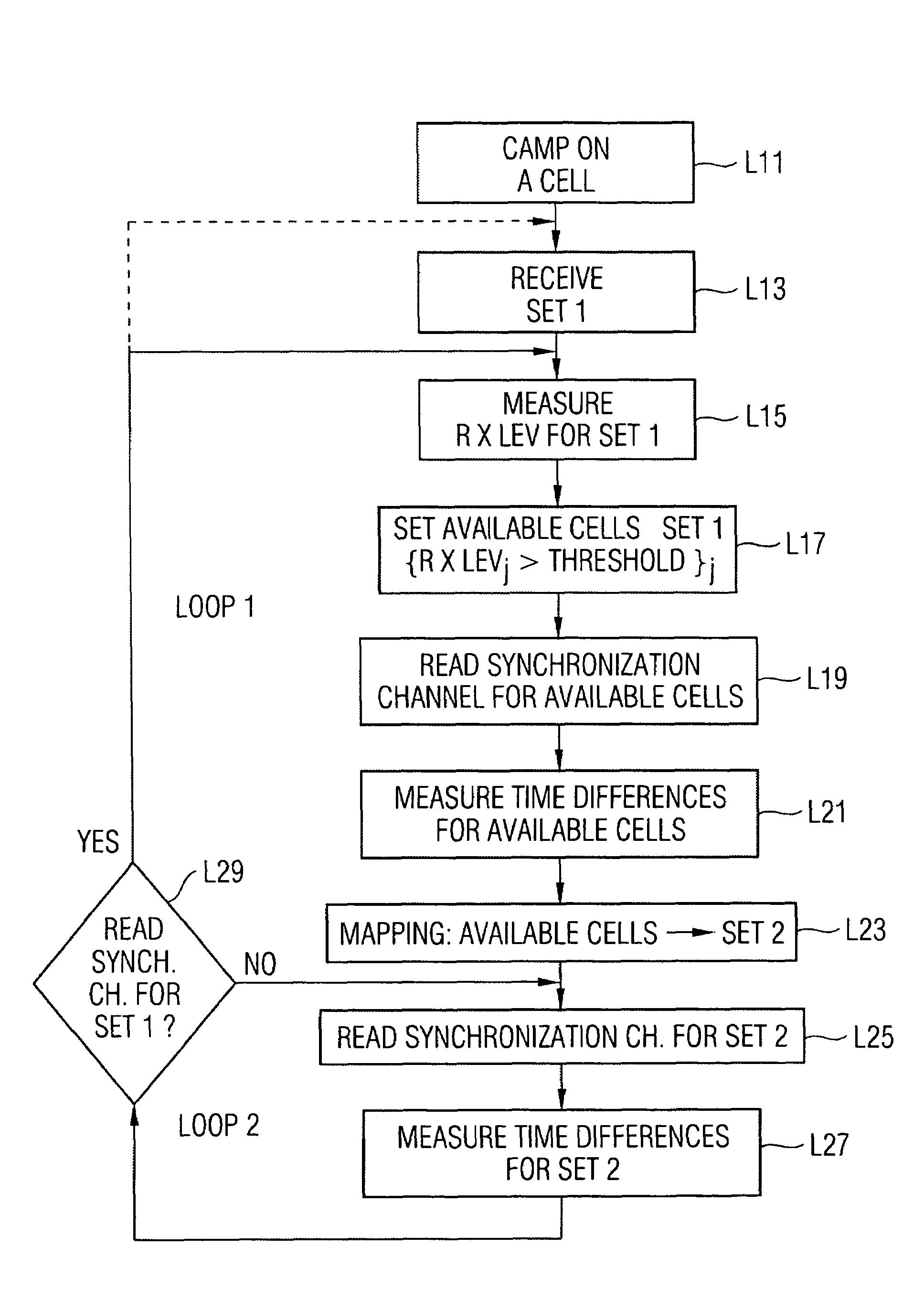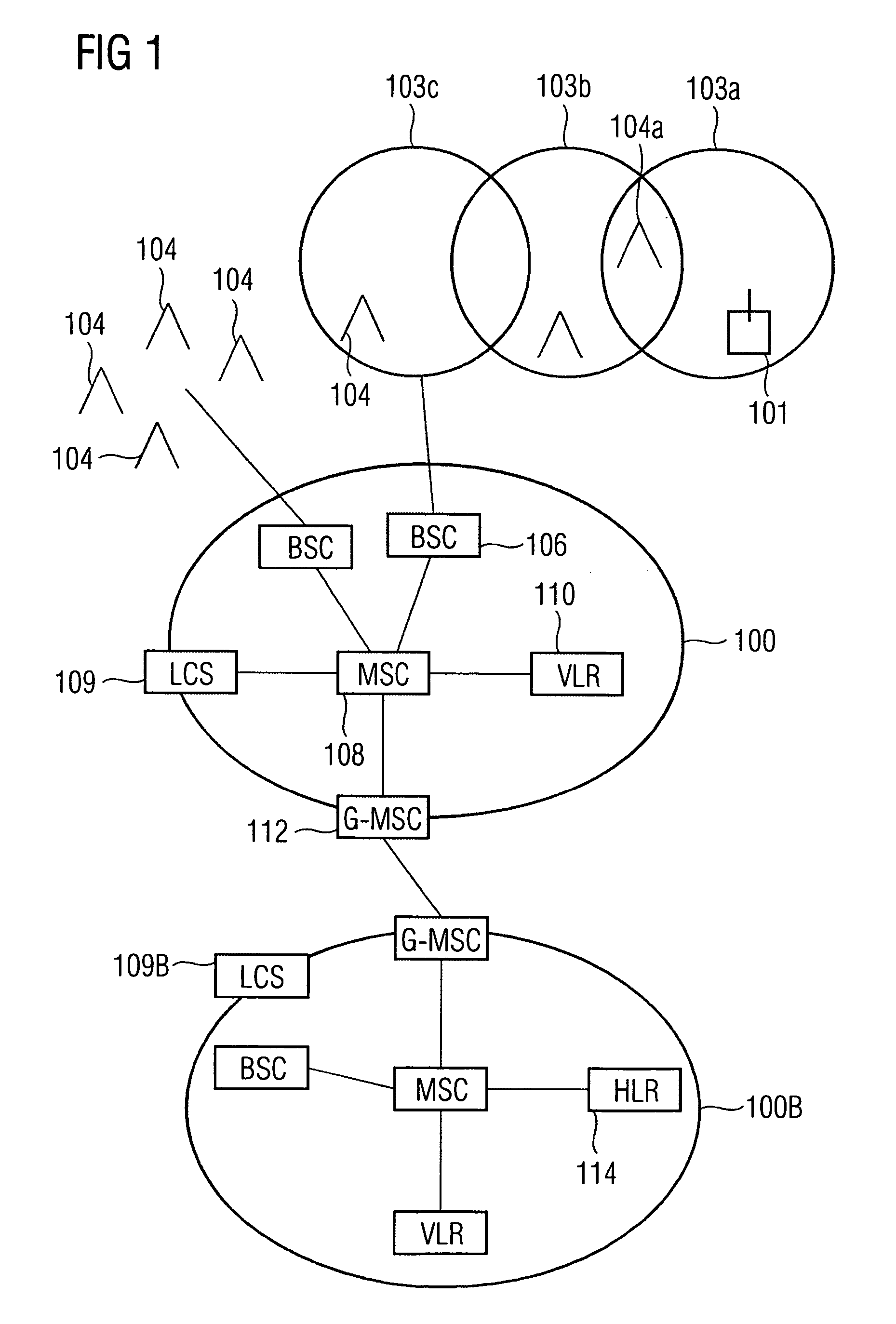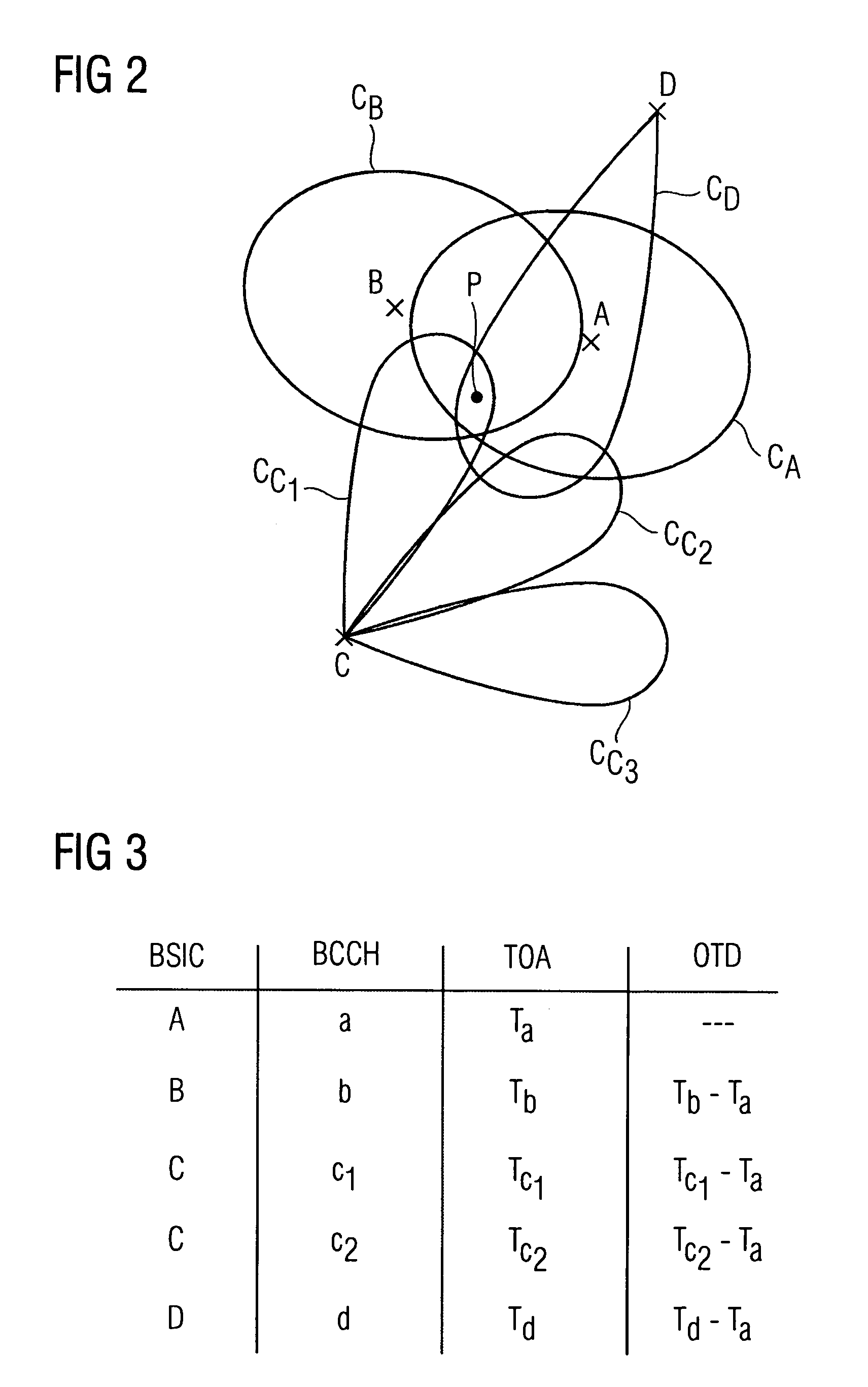Device and method for forming a set of cells for time difference measurements, and for measuring time differences for locating a user of a mobile terminal
a technology of time difference measurement and cell, which is applied in the direction of multiplex communication, transmission monitoring, wireless commuication services, etc., can solve the problems of consuming a great deal of power, consuming a lot of power, and consuming a lot of energy for continuously performed time difference measurement, so as to prolong the standby time, enhance the efficiency of time difference measurement, and save energy
- Summary
- Abstract
- Description
- Claims
- Application Information
AI Technical Summary
Benefits of technology
Problems solved by technology
Method used
Image
Examples
Embodiment Construction
[0026]FIG. 1 shows a typical cellular network 100, such as a GSM network. Characteristic for the cellular network 100 is that it includes a number of base stations 104. Each of these base stations 104 forms a cell 103a, 103b, 103c. FIG. 1 shows only a small proportion of cells 103 for the sake of clarity. A mobile station 101 camps on one of the cells 103a, 103b, 103c. In other words, when the mobile station 101 is camping on cell 103a, it is under radio coverage of base station 104a.
[0027]Typically, base stations 104 are adapted to form cells in such a manner that some cells 103 overlap with each other. Such a construction enables a flexible changing from one cell 104 to another. When the mobile station 101 is in a dedicated mode, such as when there is an ongoing phone call, the changing from one cell 104 to another is called handover. When the mobile station 101 is in idle mode, the changing from one cell 104 to another is called cell reselection. Typically, cell reselection or h...
PUM
 Login to View More
Login to View More Abstract
Description
Claims
Application Information
 Login to View More
Login to View More - Generate Ideas
- Intellectual Property
- Life Sciences
- Materials
- Tech Scout
- Unparalleled Data Quality
- Higher Quality Content
- 60% Fewer Hallucinations
Browse by: Latest US Patents, China's latest patents, Technical Efficacy Thesaurus, Application Domain, Technology Topic, Popular Technical Reports.
© 2025 PatSnap. All rights reserved.Legal|Privacy policy|Modern Slavery Act Transparency Statement|Sitemap|About US| Contact US: help@patsnap.com



